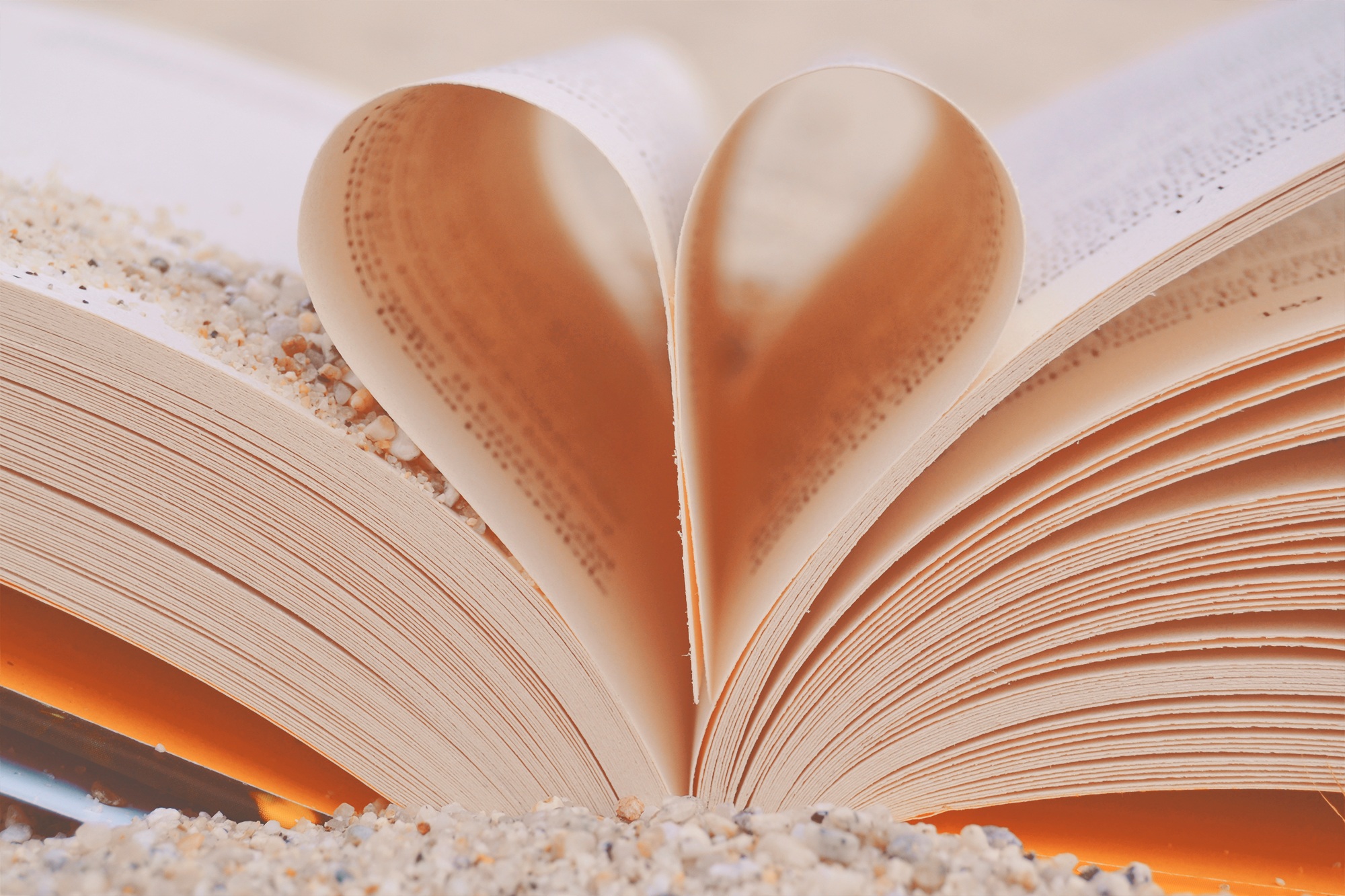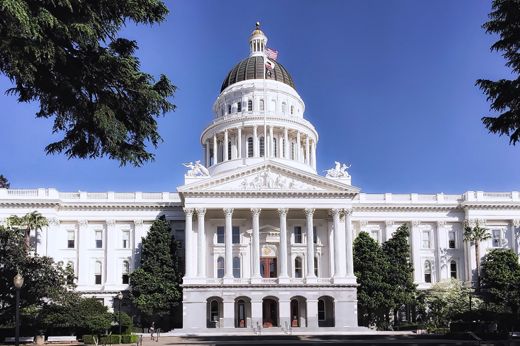Some of these books are better for young children, while others are deeper and written for teenagers. Especially for your critically-thinking teens, look for texts that consciously value intersectionality, which is the idea that overlapping definitions, including those of race, class, ethnicity, religion, gender, and sexual orientation, vary per person, changing the way each person experiences and reacts to discrimination, inequality, injustice, and life in society.
There are hundreds of books with feminist themes, but here are 25 popular, inspiring and inclusive publications:
 Grace for President by Kelly DiPuccio
Grace for President by Kelly DiPuccio
Good for first and second graders, Grace for President is the story of a girl who wants to be America’s first female president. Grace meets the challenges of mock politics as her male opponent makes gender a talking point. DiPuccio uses her book to teach children the basics of U.S. elections, and how to become just a little bit more fearless in going after what you want.
 She Persisted: 13 American Women Who Changed the World by Chelsea Clinton and Alexandra Boiger
She Persisted: 13 American Women Who Changed the World by Chelsea Clinton and Alexandra Boiger
This charming book presents a relatively diverse group of persistent and fearless American women who overcame major, often societal, obstacles.
 Pippi Longstocking by Astrid Lindgren
Pippi Longstocking by Astrid Lindgren
Independent, strong-willed, and adventurous, pirate-daughter Pippi Longstocking lives alone with a monkey, a horse, and a stash of gold coins. She is one of the most unique and funny nine-year-olds in fiction and remains one of the best-loved children’s literature characters of all time.
 Rosie Revere, Engineer by Andrea Beaty
Rosie Revere, Engineer by Andrea Beaty
Illustrated with detail and watercolor, this is a very sweet book for first- and second-graders. Plus, it rhymes! Rosie dreams of becoming an engineer and is constantly inventing things. Unfortunately, she does not always feel fully accepted for who she is. That is, until her Great-Great Aunt Rose comes to visit. Rose tells stories of building airplanes during World War II and, along with Rosie’s teacher at school, helps Rosie find her inspiration, even when things do not go as planned.
 The Gutsy Girl by Caroline Paul and Wendy MacNaughton
The Gutsy Girl by Caroline Paul and Wendy MacNaughton
A clever, funny, honest, illustrated book for grades 4-7 that encourages young girls to follow female heroines in getting past their fears, planning excellent adventures, and taking exciting risks.
 Good Night Stories for Rebel Girls by Elena Favilli and Francesca Cavallo
Good Night Stories for Rebel Girls by Elena Favilli and Francesca Cavallo
With almost cult-like online popularity, Good Night Stories is “for rebel girls ages 4 to 101 years old.” It was one of the highest-funded children’s books on Kickstarter, raising over $1 million from 20,000 backers. There are 100 stories of rebellious and extraordinary women, from Beyonce to Frida Kahlo, summarized in fairytale style, and spanning across centuries and cultures.
 Rachel Ignotofsky’s Women in Sports and Women in Science
Rachel Ignotofsky’s Women in Sports and Women in Science
These beautifully illustrated and whimsical books showcase fifty famous female figures in sports and science. Each page features an individual portrait, teaching students anatomical, scientific, and historical facts. Women in Sports mentions more than 40 sports, and Women in Science was a New York Times bestseller. You can buy prints (like Women in Activism) or signed book copies on the author’s Etsy page.
Girls Think of Everything: Stories of Ingenious Inventions by Catherine Thimmesh and Melissa Sweet
The perfect read for creative young women around ages 9-12 who are interested in STEM subjects, this book is a collection of women and girls of all ages who persevered in experimentation to invent incredible things that changed the world. Plus, the collage art cover inspires the imagination.
 I Dissent: Ruth Bader Ginsburg Makes Her Mark by Debbie Levy (Author) and Elizabeth Baddeley (Illustrator)
I Dissent: Ruth Bader Ginsburg Makes Her Mark by Debbie Levy (Author) and Elizabeth Baddeley (Illustrator)
A picture book for grades 3-5 to inspire students that argument and debate help make the world a better place. By disagreeing with the unfairness in the world and in the justice system, Ruth Bader Ginsburg worked hard to become a Supreme Court justice and feminist figure.
 Brown Girl Dreaming by Jacqueline Woodson
Brown Girl Dreaming by Jacqueline Woodson
A President Obama “O” Book Club pick, this is the memoir of a young black writer who is just beginning to organize her view of the world. Woodson grew up in both South Carolina and New York in the 1960s and 1970s, under the legacy of Jim Crow and influenced by her Jehovah’s Witness community. Full of realistic joy and sadness, this book is great for young writers and fans of poetry; Woodson’s eloquent poems are inspiring and precise.
 The Hate U Give by Angie Thomas
The Hate U Give by Angie Thomas
The Hate U Give is the story of Starr Carter, 16, who observes the disparity between her neighborhood and that of her richer white peers. When she becomes the sole witness to her friend being shot by a police officer, she is thrust into danger as well as the national spotlight. This book is a good way to start conversations about race, Black Lives Matter, and violence in America.
 Akata Witch by Dr. Nnedi Okorafor
Akata Witch by Dr. Nnedi Okorafor
12-year-old Sunny lives in Nigeria, but her albinism keeps her from going outside in the daytime. However, she soon discovers that she has secret magical powers, begins to study magic, and eventually must face evil and danger with the help of her friends. This book’s female characters, including single mothers, are strong, original people. Sunny herself fights against inequality, and though she looks different, she doesn’t let anything get in her way. Harry Potter fans will love this book.
 Persepolis 1 & 2 by Marjane Satrapi
Persepolis 1 & 2 by Marjane Satrapi
Often incorporated into high school and even college curriculum, Persepolis is a graphic memoir. It is the coming of age story of Marjane Satrapi, set over the backdrop of the Iranian revolution. Only 10 years old when the revolution begins, Marjane and her parents are rebellious. Marjane listens to “banned” music like Iron Maiden and Michael Jackson, paints her nails, and wears jewelry. To protect her from a potentially harsher and more violent fate in her home country, her parents send her to boarding school in Europe, which turns out to be different from what she expects. Witty, relatable, honest, and incredibly creative, Marjane will remain in your heart long after you put down her story.
 Little Women by Louisa May Alcott
Little Women by Louisa May Alcott
Written in 1868, this classic is full of wit and humor, and explores how young women’s identities and personalities could clash with expected roles. Four sisters and their mother remain at home while their father fights for the Union Army during the American Civil War. One girl, Jo, has some particularly great quotes, such as, “I find it poor logic to say that women should vote because they are good. Men do not vote because they are good; they vote because they are men, and women should vote, not because we are angels and men are animals, but because we are human beings and citizens of this country.”
 Anne of Green Gables by L.M. Montgomery
Anne of Green Gables by L.M. Montgomery
This story is set during the start of the Women’s Suffrage movement. Each female character, especially Anne, has a strong personality and keeps true to their own heart. To call Montgomery’s series merely a coming of age story is too simplistic; Anne has been a talkative, fiery, sweet, and idealistic “bosom friend” to young readers for decades.
 Radioactive! How Irène Curie and Lise Meitner Revolutionized Science and Changed the World by Winifred Conkling
Radioactive! How Irène Curie and Lise Meitner Revolutionized Science and Changed the World by Winifred Conkling
It can be hard to find a nonfiction book that doesn’t read like textbook, so we had to include this publication here. Radioactive! will teach students about two lesser-known but amazing scientists who made discoveries in male-dominated fields. The brilliant Irene Curie, daughter of Marie Curie, shared a Nobel Prize with her husband for discovering artificial radioactivity, which essentially led to the creation of the atomic bomb. Despite this, the French Academy of Sciences denied her membership because she was a woman. Following Curie’s research, physicist Lise Meitner made enormous progress in the field of nuclear fission and nuclear energy, but was snubbed by the Nobel committee.
 Let Me Play: The Story of Title IX: The Law That Changed the Future of Girls in America by Karen Blumenthal
Let Me Play: The Story of Title IX: The Law That Changed the Future of Girls in America by Karen Blumenthal
Title IX, passed in 1972, finally allowed women play national sports, from hockey to soccer, and is also the reason that half of all law students and medical students today are women. Let Me Play is a perfect book to help middle- and high-school students understand the history of inequality against women, as well as how laws directly affect their lives and how fighting for justice, despite small-minded opposition, can result in permanent and national change.
 Here We Are: Feminism for the Real World by Kelly Jensen
Here We Are: Feminism for the Real World by Kelly Jensen
An inclusive guide to modern feminism that discusses everything from fiction, culture, and media to finding your own voice as a potential leader on feminist topics. Here We Are features contributions by 44 writers, dancers, actors, illustrators, poets, and artists. This book can introduce teens to writers like Roxane Gay, whose work Bad Feminist would be a good follow-up read.
 We Should All Be Feminists by Chimamanda Ngozi Adichie
We Should All Be Feminists by Chimamanda Ngozi Adichie
Inspired by a TED talk you may know, We Should All Be Feminists is an essay by the author of Americanah and Half of a Yellow Sun. Adichie explains why “everyone” becoming a feminist would make the world a better place and bridge many divides. At the same time, she addresses the differences between how Western society treats boys and girls, how “feminism” has come to be a bad word, and the many connotations that the term carries.
 This Bridge Called My Back: Writings by Radical Women of Color
This Bridge Called My Back: Writings by Radical Women of Color
Loved by academics and activists, this book was originally released in 1981. This Bridge Called My Back is a collection of essays, critiques, poems, and interviews of and by women of color, examining oppression in ways that remain extremely relevant, especially in highlighting the differences between intersectional feminism and white feminism.
 Sister Outsider by Audre Lorde
Sister Outsider by Audre Lorde
“Presenting the essential writings of black lesbian poet and feminist writer Audre Lorde, Sister Outsider celebrates an influential voice in twentieth-century literature. In this charged collection of fifteen essays and speeches, Lorde takes on sexism, racism, ageism, homophobia, and class, and propounds social difference as a vehicle for action and change. Her prose is incisive, unflinching, and lyrical, reflecting struggle but offering messages of hope. This commemorative edition includes a new foreword by Lorde-scholar and poet Cheryl Clarke, who celebrates the ways in which Lorde’s philosophies resonate more than twenty years after they were first published.” – Amazon.com
 Audacity by Melanie Crowder
Audacity by Melanie Crowder
Incredibly lyrical, Audacity is inspired by the story of Clara Lemlich, a Russian Jew who emigrated to New York at the turn of the 20th century and faced oppression and lack of opportunity. A strong-willed activist, she fought for equal rights, subverted societal and familial conventions, and refused to accept the terrible treatment of factory life. Lemlich helped organize the famous Uprising of the 20,000.
 A Doll’s House by Henrik Ibsen
A Doll’s House by Henrik Ibsen
This is an excellent play that many high school students already study. Realistic and full of intention, Ibsen shocked his 1800s audience with the story of Nora, an ordinary housewife who finds herself unhappy in life – she has been living a doll’s life in a doll’s house and to find reconciliation, she must make choices that will forever define her as well as her family.




























